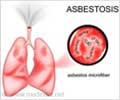At the University of Toledo in Ohio, scientists have identified a group of 15 genes that have been observed to protect individuals against lung cancer.
At the University of Toledo in Ohio, scientists have identified a group of 15 genes that have been observed to protect individuals against lung cancer. But the researchers said that if their combined activity becomes ‘too quiet’, it could mean they are being suppressed by other factors in the cell, a step that might lead to cancer.
According to lead researcher, James C. Willey, M.D., a test for these genes, in normal cells sampled via bronchoscopy, could serve as a technique to identify those individuals genetically at risk for lung cancer.In a study of 49 subjects, Dr. Willey and his colleagues were able to correctly identify the individuals with cancer 96 percent of the time.
“Smoking causes about 90 percent of all lung cancer cases, yet only about 10 to 15 percent of heavy smokers will develop lung cancer,” said Dr. Willey, an associate professor of medicine and molecular biology at the University of Toledo’s College of Medicine.
“We are looking for new techniques that will allow us to pick out the 10 to 15 percent of individuals at highest risk for lung cancer from the enormous pool of current and former smokers,’ Dr Willey added.
“While advances in screening tools like high resolution coaxial tomography (HRCT) enable increasingly effective early detection of lung cancer, scanning all present or former heavy smokers is problematic and costly when, due to genetic makeup, 85 to 90 percent of them are at low risk despite smoking history,” Dr. Willey said.
Therefore, Willey believes that a screen to identify the 10 to 15 percent of high risk individuals should increase the accuracy of further HRCT screening.
Advertisement
To determine which genes are active in lung cancer, Dr. Willey and his colleagues look for levels of messenger RNA transcripts -- instructions copied from DNA that direct cells to create specific proteins. Previously, the researchers had published findings demonstrating that genes responsible for protecting lung cells from damage caused by cigarette smoke or environmental toxins are sub-optimally regulated in the normal lung cells of individuals who develop lung cancer.
Advertisement
Their previous research allowed them to determine the threshold levels of TA for each gene – the point at which the amount of mRNA transcripts would indicate a tendency toward cancer. In this study, they used the threshold levels as a basis to assign a value of one or zero to each of the targeted genes for an individual subject, with “zero” indicating normal TA.
If the sum total of a subject’s target genes was greater than or equal to seven, the genes could collectively serve as a biomarker for lung cancer, the researchers found. Their results yielded one false negative and seven false positives among the 49 individuals assessed. According to Dr. Willey, they believe that a positive result in a subject without lung cancer may not actually be false positive, but rather could mean that the person is at an increased risk for lung cancer, which might arise later.
These results justify a larger, prospective study to determine whether this biomarker will be useful in predicting risk for lung cancer in current and former smokers.
“Overall, the study showed a high degree of accuracy for picking out lung cancer patients,” said Dr. Willey.
Source-ANI
GAN/C









